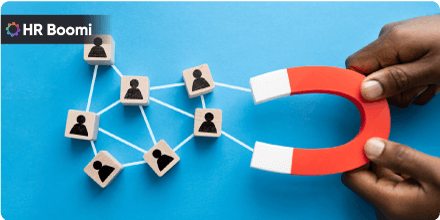
Table of Contents
In a new, rapid-paced corporate landscape, Human resources departments are constantly searching for ways to streamline their operations, enhance worker stories, and enhance overall productivity. One imperative tool that has emerged as a recreation-changer in reaching those objectives is the worker Self-service (ESS) portal within HR software. This portal acts as a digital gateway, supplying employees and HR experts with various features to manipulate numerous factors in their painting’s existence.
This informative guide will explore the eight have-to-have ESS Portal Features any ESS portal should offer. Using this exploration’s quit, you’ll benefit from treasured insights into how those features can transform HR management. In step with the latest survey conducted through HR Tech Insights, 87% of HR specialists consider that ESS portals notably improve employee engagement and HR method performance.
Let’s embark on a journey to discover how to optimize your HR processes and enhance employee engagement with the strength of the ESS portal.
ESS Portal Features
User-Friendly Interface
A consumer-friendly interface is the cornerstone of an effective employee Self-carrier (ESS) portal. It’s by far the first factor of touch for personnel and units, the tone for their whole ESS experience. A nicely designed interface should be intuitive, offering a clean, straightforward navigation shape. When employees can quickly get admission to the records they need except for undue hassle, their pride with the ESS portal is expanded.
Conversely, a cluttered or confusing interface can lead to frustration, which, in flip, can prevent adoption fees and defeat the reason for implementing an ESS portal inside the first vicinity. Furthermore, contemporary businesses ought to ensure that the ESS portal’s graph is responsive and adapts seamlessly to diverse devices. Personnel in various bodies of workers might also get admission to the portal from laptop computer systems, laptops, capsules, or smartphones.
A responsive layout approves for a constant person revel in regardless of the device used. It is imperative to prioritize a smooth and intuitive diagram for the ESS portal to ensure employees can effortlessly enter their HR data and duties, thereby selling performance and decreasing the weight on HR departments.
Personalized Dashboards
Personalized dashboards are imperative to any ESS portal, improving employee engagement and streamlining HR-associated tasks. These dashboards provide a customized view of an employee’s HR-related data. For example, employees can get the right of entry to pay stubs, tax bureaucracy, time-off balances, schooling schedules, and extra, tailor-made mainly to their needs.
By allowing employees to view only the facts relevant to them, personalized dashboards no longer solely shop time but also empower employees by giving them management over their data. This level of personalization significantly improves the employee’s enjoyment. Instead of sifting through a deluge of records to find what they want, personnel can quickly get admission to the indispensable facts that relate to them, enhancing their satisfaction with the ESS portal.
Customized dashboards remodel the portal into a precious tool for individualized HR control, helping personnel make more knowledgeable selections for their own employment, from monitoring their financial transactions to preserving track in their training and development. Ultimately, this feature encourages greater employee engagement and a sense of empowerment in the company.
Employee Self-Service
At the center of every powerful ESS portal lies the self-provider capability. This feature grants employees the autonomy to control a range of HR-associated responsibilities, barring the steady want for HR department intervention. Via the portal, employees can replace non-public records, request break days, access their pay records, and obtain information about their advantages, all independently.
This self-provider capability is a recreation-changer for HR departments, drastically lowering their administrative workload. By allowing employees to manage their HR-associated obligations, an ESS portal now not only enhances the performance of HR operations but also fosters a feeling of empowerment among a few personnel.
Personnel appreciate the ability to independently control their very own data, which, in flip, boosts their delight and engagement with the employer. It is a win-win situation that blessings each HR team and personnel, transforming HR management into a seamless and self-directed process.
Workflow Automation
Workflow automation is a pivotal element of an ESS portal, streamlining various HR processes and decreasing the chance of human mistakes. This option automates obligations, including routing depart requests for approval, onboarding new personnel, and dealing with overall performance critiques. Through automating those methods, businesses can ensure consistency in their HR practices and expedite choice-making.
The advantages of workflow automation are twofold. First, it reduces the probability of errors occurring when responsibilities are achieved manually. By imposing standardized processes, the ESS portal helps keep accuracy and compliance in HR functions.
Secondly, the automation of HR workflows speeds up the tempo of choice-making, ensuring that approvals and different moves take place unexpectedly. This now not only enhances performance but also contributes to better worker reviews by means of decreasing needless delays and waiting times.
Mobile Accessibility
In modern-day cellular teams of workers, it’s integral to have an ESS portal accessible on different cellular gadgets. Whether or not personnel are working from the workplace, remotely, or on the go, they need to be able to access the portal easily. Cellular accessibility is more than just a comfort; it is a necessity for current organizations aiming to foster flexibility and responsiveness inside their body of workers.
Mobile accessibility ensures employees are not tethered to a desktop computer to interact with the ESS portal. This freedom permits them to access HR-associated facts and carry out tasks from anywhere, supporting the evolving nature of work globally. It also aligns with the expectation that the era must seamlessly integrate into our daily lives, making HR techniques more on-hand and less dependent on the area.
Communication and Notifications
Effective conversation is pivotal for preserving personnel knowledgeable about corporation information, policy updates, and critical bulletins. An ESS portal should have a dedicated channel for sending messages and notifications to personnel. This guarantees that integral statistics reaches all personnel in a well-timed and constant process, no matter their function or region within the enterprise.
With this feature, HR teams can disseminate essential updates and announcements successfully. This guarantees that employees are on the same web page, which is vital when rules trade, or new organization-extensive initiatives are released. It promotes a way of life of transparency and engagement, as employees are more likely to stay informed and engaged when they get hold of timely, relevant records through the ESS portal.
Moreover, it reduces the chance of miscommunication, as messages can be standardized and tracked in the gadget, improving readability and accountability.
Conclusion
In conclusion, a worker Self-service portal is a precious asset for agencies trying to enhance HR efficiency and empower their personnel. By incorporating those eight essential features, you can create a person-friendly and powerful ESS portal that saves time, reduces administrative burdens, and will increase worker pleasure. When selecting or designing an ESS portal for your business enterprise, understand that it’s no longer only a tool; it’s funding for your corporation’s fulfillment.
By placing those features to work, you could take your HR approaches to the next level and make your business enterprise more agile and aggressive in today’s ever-evolving commercial enterprise landscape.
Recent Posts
-

In-house vs. Outsourced Payroll: Pros and Cons
-

Mastering Talent Retention: A Corporate Challenge
-

What is employer branding and how to apply it in your company?
-

The Significance of Employee Communication Within
-

What is time management and why is it important?
-

Net salary: what is it and how is it calculated?
-

Enhancing Employee Experience: Strategies for Excellence
-

10 Best Gifts to Boost Sales Channels
